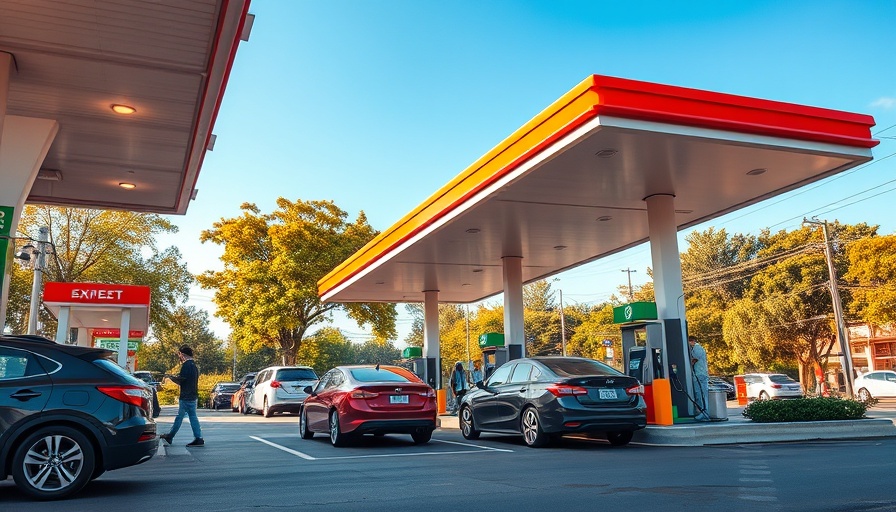
California's Battle Against Rising Gas Prices: A Complex Landscape
As gas prices threaten to skyrocket once again, California, known for its aggressive environmental policies, faces mounting pressure to navigate the tricky waters of fuel production and consumption. Recent reports indicate that while the state has long promoted a shift to electric vehicles (EVs), the transition has stalled, leaving many Californians to face steep gas prices at the pump.
The average price per gallon in San Diego reached $4.55 recently, with state averages close behind. Such figures seem like a relief from the dramatic peaks of $6.44 seen in June 2022. However, experts warn that the looming closure of two oil refineries could lead prices to spike beyond $8 per gallon. Balancing the state's commitments to environmental sustainability with the practical needs of consumers is now more critical than ever.
The Decline of Traditional Fuels in a Changing Market
For decades, California has prided itself on having strict vehicle emissions standards and aims to phase out gasoline vehicles entirely by 2035. However, the recent revocation of waivers that allowed for this transition has left state leaders in a precarious position. With demand for gasoline remaining high, especially during peak driving seasons, lawmakers led by Governor Gavin Newsom are scrambling to boost local gas production.
Innovative Solutions Amidst Adversity: The Ethanol Proposal
In response to escalating costs, Assemblymember David Alvarez has introduced a bill advocating for an increase in ethanol content in gasoline from 10% to 15%. This change aims to alleviate consumer costs by potentially saving drivers up to 20 cents per gallon. Ethanol, derived from corn or sugar, not only offers a cleaner-burning fuel alternative but has been embraced as a cost-effective solution in all other states, making California's current restrictions seem outdated.
Understanding California’s Gas Pricing Puzzle
For many San Diegans, it can be challenging to reconcile why they consistently pay about 40% more for gas than the national average. Factors contributing to this discrepancy include the state’s specialized low-sulfur gasoline requirements, which, while helpful in reducing pollution, significantly drive up refining costs. Additionally, the cap-and-trade program adds another layer of fees, which further increases gas prices.
Policy Implications and Future Predictions
Negotiations are in full swing between state leaders and the oil industry as they explore ways to revitalize oil production, particularly in Kern County. The outcome of these discussions could significantly impact how quickly Californian consumers see relief at the pump. As experts analyze the volatile nature of crude oil markets, there is a consensus that California remains vulnerable to external geopolitical pressures that can lead to sharp price increases.
Time for Action: Californians Demand Solutions
With the state's economic recovery still ongoing, many residents are urgently calling for solutions to tackle rising fuel costs. Alvarez's commitment to advancing legislation aimed at reducing gasoline prices demonstrates a willingness among lawmakers to find immediate relief for consumers. As discussions progress, it’s clear that there needs to be a balance struck between environmental progress and economic realities.
Your Voice Matters: Engage and Advocate
As Californians, your opinions and actions have significant sway over local policies and initiatives. Keep an eye on developments regarding the ethanol bill and other efforts to curb rising prices. Your engagement can drive change; consider reaching out to your local representatives and advocating for consumer-focused policies that protect you from the volatility of gas markets.
 Add Row
Add Row  Add
Add 




Write A Comment